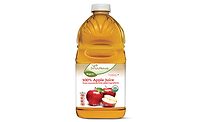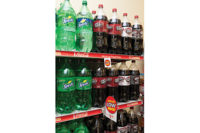Beverage sales vary across discount retailers
Expanded, healthy offerings drive foot traffic

As today’s consumers spend their dollars across more channels and store formats, retailers are facing increased competition for dollar share, experts note. Despite this fact, the overall discount retail channel performed “quite well” last year as dollar stores drove growth of nearly 7 percent, notes Jon Hauptman, senior director of retail at Long Grove, Ill.-based Willard Bishop Co., an Inmar analytics company.
“Economic uncertainty continues to influence shopper behavior. Starting with the recession of 2008, consumers fundamentally changed their shopping habits and are not going back to their old free-spending ways,” Hauptman says. “Additionally, millennials are looking for interesting products, but are also cognizant of their budgets, and discount retailers are helping them find interesting products at agreeable prices.”
While value grocery experienced a slight uptick in dollar share during the past year, the discount channel as a whole is “not putting a dent” into the commanding shares occupied by conventional grocery and supercenters, which account for 38.8 and 22 percent of sales, respectively, says Jordan Rost, vice president of consumer insights for New York-based Nielsen.
Despite increased foot traffic across warehouse club stores, value grocery and dollar store segments, this has not equated to more dollars because consumers are spending an average of 2.8 percent less during each trip at dollar stores, Rost explains.
“Warehouse club, value grocery and dollar stores hold 11.3 percent, 4 percent and 2.5 percent respective shares of total department spend across food and beverage,” Rost says. “When looking at total beverages, warehouse, value grocery and dollar stores hold 10.7 percent, 4.5 percent and 2.3 percent respective shares.
“Across all channels, beverage sales have reached over $111 billion, a plus 0.6 percent increase from last year,” he continues. “Looking at discount channels, total beverage sales have increased across warehouse plus 3.5 percent, value grocery plus 3.7 percent, and dollar stores plus 0.7 percent. This stands in stark contrast to total beverage sales in conventional grocery, which have declined 0.1 percent. Across all channels, liquid tea and coffee are exhibiting some of this year’s biggest growth trends.”
Quick trips, promotions and the longest period of falling food prices in the past 50 years not only are impacting the discount retail channel, but also the overall consumer packaged goods (CPG) industry, says Susan Viamari, vice president of Thought Leadership at Information Resources Inc. (IRI), Chicago.
“These declines are driving national brand manufacturers to lower prices, putting the squeeze on private label price benefits and encourages private-label marketers to slash their prices to re-establish their low-price advantage, having a negative impact on private label share of dollar sales, as well as overall comp store sales and profitability,” she says.
“The dollar channel is also struggling against a highly competitive retail landscape,” she continues. “Drug and dollar channels, for instance, have expanded their offering of food and beverage in attempt to drive traffic and win share of stomach (and thirst). … During the past year, the dollar channel saw dollars slide down 2.3 percent, compared to an overall industry contraction of 0.5 percent.”
In its May 2016 “The Future of Food Retailing” report, Willard Bishop notes that understanding growth trends is crucial for determining market dynamics. The Top 3 formats with the highest increases in sales — as a percentage of growth — are eCommerce, fresh format and dollar with increases of 20.9, 9.8 and 6.8 percent, respectively.
“The dollar format continued its strong sales growth with a 6.8 percent increase to $32.4 billion, while store counts increased by 3.3 percent to over 29,000 stores in 2015,” the report states.
To entice consumers, discount retailers are more focused on food and consumables than ever before, Hauptman says. “They’re providing much more prepared food options as well as unique items and brands, featuring new flavors to capture their interest and spending,” he says. “In fact, many discount retailers are … focusing on healthy, natural/organic and interesting/indulgent items to attract shoppers and allow them to purchase these items at fair prices.”
Although the dollar channel maintains its solid presence among lower-income shoppers, its expanded food and beverage offerings are driving additional footfall and attracting other shopper segments, IRI’s Viamari says.
“Since immediate and fill-in trips are increasing, getting assortment right in these areas is critical,” she says. “Focusing tightly on needs and wants — such as ethnic foods, more premium or more economy, private label — within each particular store is really important to protecting and growing share of spending.”
Looking for a reprint of this article?
From high-res PDFs to custom plaques, order your copy today!






